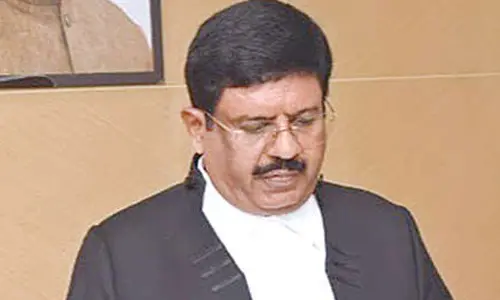Heritage Trial: Khajuraho temples completed 1020 years in 2019

Visiting Khajuraho has become much easier these days. To start with, there is a modern airport with a number of wide runways
India's world famous Khajuraho temples completed 1,020 years in 2019. For those who have never been to Khajuraho, whatever one reads or hears about the temples do not do justice to this UNESCO World Heritage Site. For me it was far more incredible than I had ever imagined and on my very first visit I realised that its erotic element that has been the most highlighted, is but a miniscule part of the whole.
Visiting Khajuraho has become much easier these days. To start with, there is a modern airport with a number of wide runways. On my first visit, the plane had touched down on a runway stretching out among the fields! I remember being shocked at the short bumpy runway and the choice of location!
There is a fascinating legend behind the dynasty that created Khajuraho. The creators claim their descent from the moon and Chandravaraman, the founder of the Chandela dynasty is said to be born from the union of Hemwati, the beautiful daughter of a Brahmin priest and the Moon God. In his dreams, Chandravaraman is said to have been told by his mother, to build these temples- a task achieved in an inspired burst of activity, over a span of 100 years. With the decline of the dynasty, the temples lay forgotten for many centuries and are said to have been rediscovered only in the last two centuries.
On my first visit to Khajuraho, I reached rather late in the afternoon and sunset was not too far away. On the cab driver's advice, I restricted my visits to the eastern group of temples, located near the village and are said to be a combination of Hindu and Jain origin. The Parsvnath Temple is the largest in this group and most of the beautiful carvings that one sees printed everywhere are part of this group - the standing figure of Shiva and Parvati, usually used for posters on Khajuraho and others, such as the famous Singara figures of a graceful feminine figure applying kohl to her eyes and another removing a thorn from her feet, are all here.
Adjacent to the Parsvnath Temple is the more recently restored Adinath temple with its fine carvings running along the sides in three bands of sculpture. Within both these temples there are images of Tirthankars in black stone. According to me this temple could well be considered one of the most graceful structures in Khajuraho.
A third temple built around 1028 AD and is known as the Shanti Nath temple, has a four and a half metre high standing image of Adinath, known to attract pilgrims of the Digambar Jain Sect, throughout the year. There are also three Hindu temples in the group - Brahma, the Vamana and the Javari dedicated to Vishnu, with their richly carved gateways and exterior carvings. But what I found more interesting was the Hindu Ghantai Temple (temple of bells), located within the village and is counted among the eastern group. This temple must have been a rather splendid structure, but now lies in ruins.
All that remains is the entrance doorway with its rows of heavenly bodies and the seventeen pillars carved with scrolls of bells, after which the temple is named.
Thanks to the driver I also managed a Darshan' of Shankar Bhagwan' at the Matangesha temple. This is part of the western group of temples, but is located outside the walls of the complex and still in use. Not a particularly ornate temple, it was, however, clear that it dated back to the same period as the rest of the temples.
Religious sentiments appeased, I decided to call it a day. Next morning, I set out quite early for the western group of temples, but found a large number of visitors, there before me!
Here, the first temple to see is the Lakshmana Temple, dedicated to Vishnu and his incarnations. On the lintel of the entrance to the temple are carved images of the trinity of Brahma, Vishnu and Shiva. In the intricately carved sanctum, there are idols of Vishnu's many incarnations.
Located right opposite the Lakshmana temple, lies the Varaha Temple. Here one can see an amazing nine foot standing statue of Vishnu's �Varaha' (boar) incarnation - its intricately carved surface polished by the touch of countless hands. This rare and fully carved standing image, has hardly ever been seen or mentioned in any description of the Khajuraho temples.
But is definitely a must -see!




















